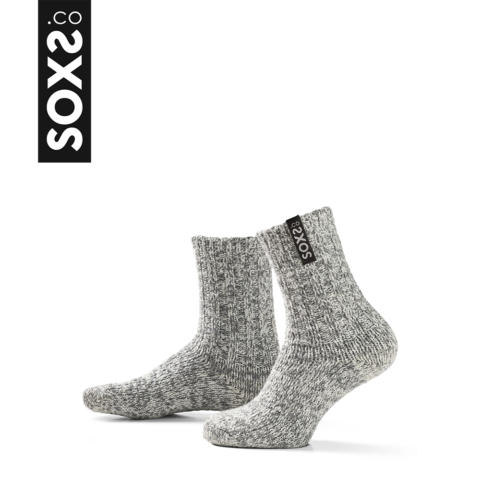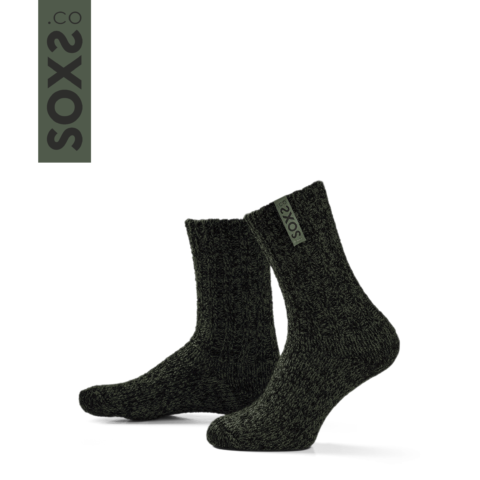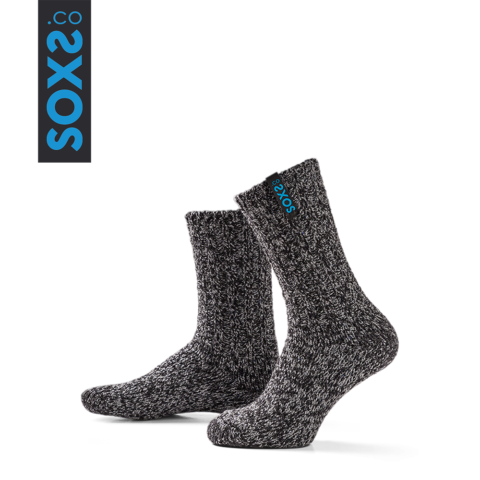Soft warm premium wool socks
Gift ready, stylishly packaged
Orders placed before 1:00 PM will be shipped today (on weekdays) PLEASE NOTE: The delivery time of Pimp My Soxs is 5 working days!
When you spend all day on your feet in challenging environments like construction sites, comfortable and durable footwear makes all the difference. Wool socks offer a practical solution with their natural warmth, breathability, and resilience. These qualities make them an excellent choice for demanding jobs where foot comfort directly impacts your workday.
Wool socks are made from natural sheep’s wool fibers that provide exceptional comfort and insulation. At SOXS, we use high-quality New Zealand sheep wool that’s sustainably sourced and mulesing-free, supporting both ethical practices and environmental responsibility.
The natural structure of wool creates a thermal barrier that keeps your feet warm in cold weather and comfortable in warmer conditions. Wool naturally wicks moisture away from your skin, allowing your feet to stay dry throughout the day even during physical activity.
Construction work demands footwear that can withstand tough conditions while maintaining comfort. Wool socks provide a snug, elastic fit that moves with your foot, reducing friction and preventing blisters during long workdays.
The temperature regulation properties of wool are particularly valuable on construction sites where you might move between indoor and outdoor environments. Your feet stay warm when it’s cold and remain comfortable rather than overheated when temperatures rise.
Wool’s natural crimped structure creates thousands of tiny air pockets that trap body heat efficiently. This design provides excellent insulation while still allowing your skin to breathe – a balance that synthetic materials often fail to achieve.
For construction workers facing changing weather conditions, this temperature regulation is invaluable. Your feet remain at a comfortable temperature throughout the day, while the moisture-wicking properties keep sweat from accumulating.
Wool socks are naturally resilient, making them ideal for the demands of construction work. The strength and elasticity of wool fibers allow these socks to maintain their shape and performance even with daily wear in tough conditions.
Our SOXS wool socks are designed to handle challenging environments, resisting the dirt, debris, and physical stress common on construction sites. This durability translates to longer-lasting socks and better value over time.
While synthetic socks may cost less initially, they don’t offer the same performance benefits as wool. Synthetic materials often trap heat and moisture, leading to uncomfortable, sweaty feet and potential odor issues during long workdays.
Wool is also a renewable resource, unlike petroleum-based synthetic fibers. At SOXS, we prioritize sustainable wool sourcing, creating socks that are better for both your feet and the environment.
When choosing wool socks for construction, consider the thickness based on your climate and footwear. Thicker socks provide more cushioning and warmth for cold conditions, while thinner options work well in milder weather.
Proper fit is essential – socks should be snug without restricting circulation. Our SOXS are designed with the right balance of elasticity to stay in place throughout active days without causing discomfort.
Finding the right fit is important when using wool socks. Too tight, and they may restrict circulation; too loose, and they can bunch up causing discomfort or blisters.
Some people worry about wool allergies, typically caused by lanolin in the fibers. Our SOXS are crafted to be completely itch-free, using techniques that minimize potential irritants while maintaining wool’s natural benefits.
Proper maintenance extends the life of your wool socks considerably. We recommend washing them using a gentle wool program at maximum 30°C with wool-specific detergent to preserve the fibers.
Always air dry your wool socks by laying them flat, avoiding the dryer which can damage the natural fibers. With this simple care routine, your wool socks will remain comfortable and ready to support you through demanding workdays.
Looking for sustainable, durable wool socks that can handle construction site demands? Explore our collection at soxs.co to find the perfect pair for your workday comfort.

Calf height

Calf height

Calf height